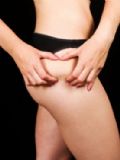|
Darn, it happened again! You’ve just tried a new facial cleanser, but instead of the healthy glow you had hoped for, your skin became red, itchy and irritated. With a sigh, you throw the cleanser into the drawer filled with all of your other beauty product rejects—items you can’t use because of your sensitive skin. While dermatologists define sensitive skin as a severe reaction such as pustules, bumps and sores after using a cosmetic product, most people feel they have sensitive skin if they have mild redness, stinging, burning or tightness soon after using a particular product or if they frequently experience chapped skin or ingrown hairs. And while it is uncomfortable on its own, sensitive skin is often an indicator of a more serious skin condition, such as contact dermatitis, rosacea and eczema—conditions that your dermatologist can diagnose and help you treat. Contact Dermatitis Contact dermatitis is an inflammation of the skin that occurs when you come in direct contact with an irritant or allergen, such as soap, detergent, fragrance, nickel or other metals, and solvents or other chemicals. A reaction may occur the first time you’re exposed to the irritant or it can develop over time as the product is used on a regular basis. Symptoms of contact dermatitis include itching, skin redness or inflammation, tenderness, localized swelling, and oozing or crusting sores. Contact dermatitis can be treated by washing off the irritating substance with lots of water and avoiding further exposure to the substance. Topical steroid medications may reduce inflammation, but in most cases the best treatment is to simply leave the area alone. Healing usually takes place without complications within two or three weeks. Sufferers can help prevent further reactions by avoiding the irritating substance as much as possible or by wearing rubber gloves if contact is unavoidable. Rosacea If your skin turns red at the slightest thing and seems to overreact to emotions, temperature changes and spicy foods, you may have a condition called rosacea. Rosacea is also a likely possibility if you have visible blood vessels on the face and permanent skin redness. Rosacea must be treated by a dermatologist. Your doctor may prescribe prescription creams or perform laser therapy to reduce redness. Lifestyle changes (reducing stress and avoiding extreme temperature fluctuations, spicy foods and intense exercise) can also improve the appearance of rosacea. Wearing proper sun protection at all times is a must for rosacea sufferers. Eczema Do you have red, flaky patches on your elbows that never go away? If so, eczema may be the culprit. Eczema occurs when the outermost layer of the skin is stripped away. This allows moisture to escape and allergens to come in. Patches of eczema commonly show up on the knees, elbows, and tops of the feet, between toes, and on the hands, face and scalp. Eczema, asthma and hay fever are all triggered by the same allergens and may have a genetic link. If one of your parents has hay fever, for example, you may react to allergens with eczema instead. Harsh cleansers, dry weather and allergic reactions to substances like fragrances, foods and pet dander can all contribute to the problem. While eczema can be very itchy, it’s important to resist scratching, which can irritate the skin even more and cause a secondary infection. Antihistamines and over-the-counter hydrocortisone creams will help reduce the itching, and a diet high in essential fatty acids (found in fish, nuts, and flaxseed) can help calm inflammation. Yoga, meditation and other relaxation techniques can also help relieve symptoms and reduce future flare-ups. If your condition doesn’t improve within three or four weeks, see a dermatologist. Prescription steroid creams will quickly ease itching and inflammation. If these don’t work, your doctor may prescribe a cream that suppresses the immune system, thereby turning off the skin’s allergic response. Eczema is fairly easy to treat when caught quickly but the longer you wait, the worse it will get, which means a longer healing time. Chapped Skin If you’ve ever spent a day on the ski slopes and ended up with red, wind-burned skin, you know how uncomfortable chapped skin can be. Skin becomes dry, sore and cracked when its natural oils are depleted. Extended exposure to the elements is a prime culprit, as well as repeated contact with soap and water, dehydration and a lack of essential fatty acids in the diet. Vitamins also play a key role. A deficiency of B vitamins, for example, can contribute to chapped, cracked lips, while vitamin A is needed to keep skin generally healthy. Chapped skin can be relieved by using a humidifier or by placing bowls of water near a heater to add moisture to dry winter air. Avoid the use of all soaps and use a creamy, oil-based cleanser instead, followed by a rich, fragrance-free moisturizer. Ingrown Hairs While ingrown hairs aren’t a result of sensitive skin, they are irritating and may contribute to an already painful skin condition. Ingrown hairs, or razor bumps, occur when the shaved hair gets trapped inside the hair follicle and grows back down into the skin. Shaving too closely can trigger ingrown hairs. To avoid this, don’t pull the skin too taut while shaving, shave in the direction of your hair growth, and don’t put too much pressure on the blades. If you already have ingrown hairs, use a product with salicylic acid to exfoliate the upper layers of dead skin around the trapped hair and use tweezers to gently lift the hair out of the follicle without removing it completely. It’s hard to put your best face forward when your skin is red and irritated. While a little detective work is needed to find the cause of your sensitive skin, the right combination of medical attention and gentle products will help you become comfortable in your own skin again. |




.jpg)



